Apple iPhone X price, features, specs and release date: iPhone Xs and Xs Max hit UK stores
Apple's latest flagship is now available, replacing the iPhone X
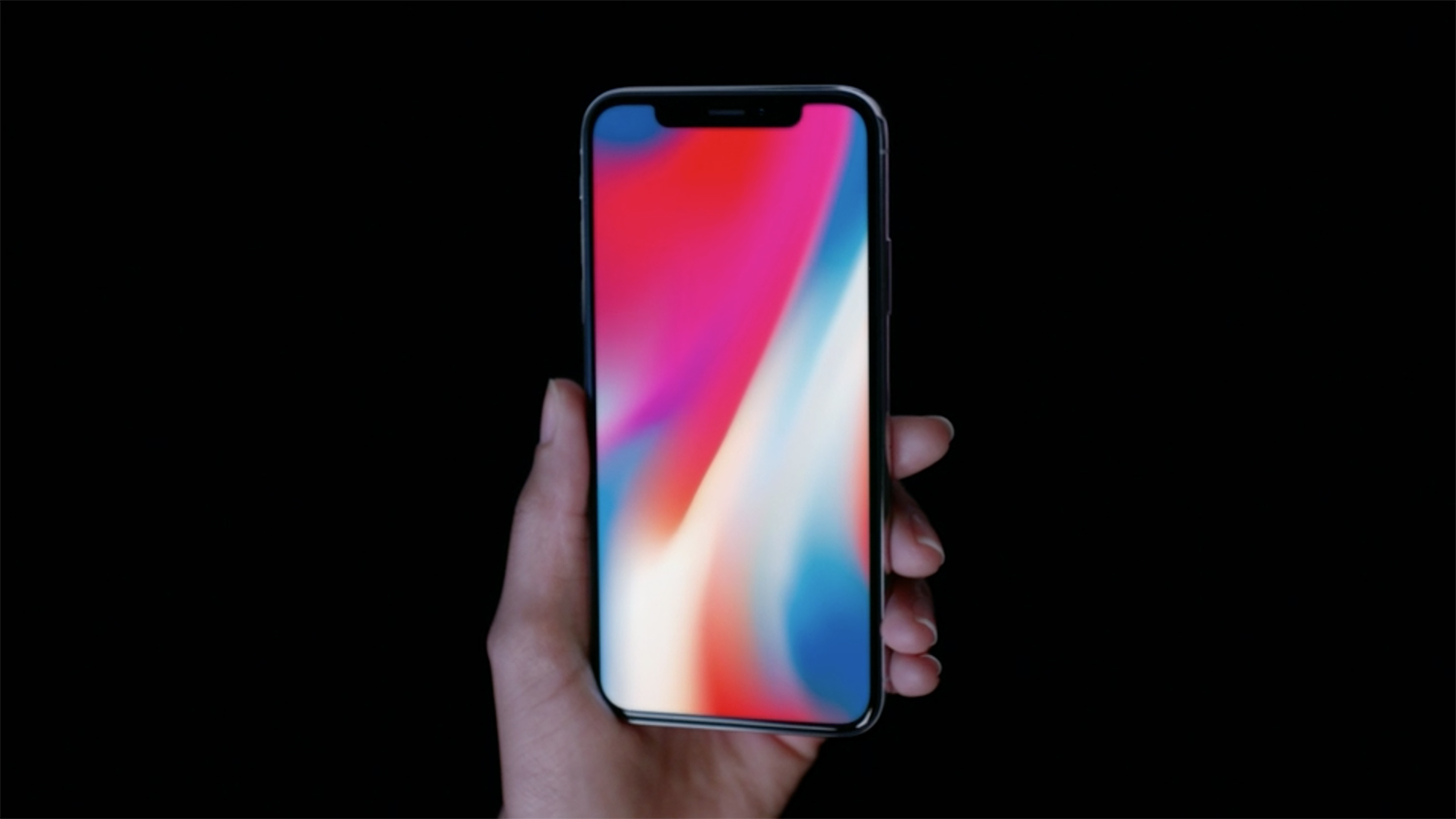

Apple's 10th anniversary iPhone, the iPhone X, was announced on 12 September at the Steve Jobs Theatre at Apple Park, the tech giant's new San Francisco headquarters.
It brings a whole range of new features to Apple's flagship device a decade after Jobs launched the original, multi-touch iPhone.
iPhone X latest news
21/09/18: iPhone Xs and Xs Max available to buy in the UK
Apple's successors to the iPhone X, the iPhone Xs and Xs Max, are available to buy today from Apple stores across the UK and on Apple website.
While the iPhone X brought in a dramatic departure for the design of previous generations of iPhones, with the removal of the somewhat iconic home button and the adoption of an edge-to-edge OLED display, the iPhone Xs is but an incremental upgrade on its predecessor.
It offers refinements to the iPhone X, as well as more powerful innards in the form of Apple's custom-designed A12 Bionic chipset. While the larger iPhone Xs Max sports a 6.5-inch display, for people who want more screen real estate over the 5.8-inch display found in the iPhone Xs and iPhone X.
Apple has also stuck to its model of premium pricing over rival Android flagship phones.While the iPhone Xs starts at 999, the same price as the iPhone X, people after a hefty 512GB of onboard storage will need to be prepared to spend 1,349 for the privilege. A 256GB version of the iPhone Xs is available for 1,149.
Get the ITPro daily newsletter
Sign up today and you will receive a free copy of our Future Focus 2025 report - the leading guidance on AI, cybersecurity and other IT challenges as per 700+ senior executives
Pricing for the iPhone Xs Max is also rather high, with the 64GB model priced at 1,099. That price jumps up to 1,249 for the 256GB version, and hits a high of 1,449 for the 512GB model, which is the most expensive iPhone to date.
The advent of the iPhone Xs means Apple has stopped selling the iPhone X, though people after more affordable iPhones can still opt for the iPhone 8 and iPhone 7, with starting prices set at 599 and 449 respectively.
Apple fans after an iPhone with an edge-to-edge but baulk at the high price of the iPhone Xs can wait for the iPhone XR, a 'budget' take on Cupertino's flagship phone.
Pre-orders for the iPhone XR start on 19 October for a starting price of 749, with the handset shipping a week later on 26 October.
10/9/2018: iPhone Xs Max and Apple Watch bundle could top 2,000 mark
Apple's successor to the iPhone X could come at a truly wallet-emptying price especially when bought as a bundle with other accessories such as a next-generation Apple Watch and Cupertino's AirPods wireless headphones.
According to sources familiar with Apple's pricing plan, such a high-end, large display iPhone and Apple Watch bundle could cost 2,000, reported German language Apple-following site Macerkopf.
While such pricing should be taken with a pinch of salt, given it would make the next flagship iPhone the most expensive model to date, Ben Woods, chief of research at CCS Insight, said such an expensive bundle is a distinct possibility.
"It seems highly likely that Apple could smash through the 2,000 threshold with its latest products. If, as widely rumoured, Apple reveals a large screen variant of the iPhone X, it will likely come at a premium to the existing model which had already smashed the 1000 threshold. With the top of the line model with a big memory configuration, an updated cellular-enabled Apple Watch and some AirPods the bundle could easily reach 2,000," Woods said in a statement sent to IT Pro.
"Reaching this milestone merely underlines what a great job Apple is doing at delivering high value products to consumers and reiterates our view that the smartphone is the single most important piece of technology is most consumers' lives"
"With consumers holding onto their smartphones for longer than ever it seems they are happy to pay a premium to get the best iPhone available. If paired with other accessories such as the Apple Watch and AirPods it won't be surprising if they crash through the psychologically important 2,000 threshold."
We will have to wait until 12 September to find out if this rumour bears fruit as that's when Apple is slated to reveal new iPhones and products.
10/9/2018: Smaller, budget iPhone to be called 'Xc'
The smaller version of Apple's next range of iPhone models is set to be named the iPhone Xc, according to a Chinese website.
The iconic phone maker will announce three new devices at its 'Gather Round' event on the 12th of September and according to Macotakra (via 9to5Mac), the 6.1in model will have the 'C' label.
This would represent a familiar naming policy from Apple, similar to the iPhone 5c which was the budget version of the 5s and came in a range of colours, despite wide reports that the larger variation of the new iPhone X would be dubbed 'Max' rather than plus.
This could potentially be a complete fabrication, but it is reported that this 'entry-level' iPhone will be cheaper, smaller, built with an LCD screen and will offer a wider range of colours.
Further proof of the colours came from iPhone 'leaker' Ben Geskin on Twitter, who posted a series of photos of coloured iPhone models, claimed to be prototypes.
Geskin is said to have a good track record for iPhone leaks and his photos suggest the new device will come in red, white and blue, and potentially gold and rose gold.
Last month 9to5Mac also claimed the new iPhone XS will come in a gold option and will be called the 'Xs Max' which suggests a change of branding by Apple, which usually uses the 'Plus' moniker for the larger model.
All three models, plus a new Apple watch are set to be unveiled on Wednesday at an event at the Cupertino campus, where there is also rumours of a new Macbook and show be released a week later, f Apple follows its usual patterns.
6/9/2018: Larger iPhone to be called the 'Xs MAX'
Apple will call the larger version of its next iPhone the 'Xs Max', ditching the Plus branding for the first time since 2014.
Starting with the Phone 6, Apple has released two sizes of the same model each year, dubbing the larger handset 'Plus', but that is changing with the iPhone Xs, according to a report by 9to5Mac.
To mark the tenth anniversary of the iPhone, the company changed its naming patterns with last year's iPhone 'X' which replaced the standard number and it seems the moniker for sizes will also be rebranded.
In addition to the name change and larger size, the iPhone Xs Max is expected to offer an even bigger battery than the smaller Xs. Both phones will also reportedly see an internal spec boost over the current iPhone X, with a new A12 processor and 4GB of RAM.
The iPhone Xs, iPhone Xs Max and a third mid-sized LCD handset are set to be unveiled at an event on 12 September at the Steve Jobs Theater in Cupertino.
The third device will have the same facial recognition sensor as the iPhone X but will be much lower in price thanks to a few cost-saving measures, including a less expensive LCD screen.
The name of this third device has not been leaked but is rumoured to be dubbed the Xc with the 'c' standing for colour.
Earlier this month reports also suggested that the next generation of iPhone would be called XS and also posted pictures of the new handsets which is rumoured to come in a gold option.
4/9/2018: iPhone X holds 68% of its value after a year
With the new iPhone XS being released sometime this month for a reported 1,000, there will be plenty of Apple fans selling their current handsets to raise cash.
Those with last year's model, the iPhone X, will be delighted to know that it still keeps a high value for resellers. A 256Gb iPhone X can earn resellers up to 680, which is around 68% of its original value, according to MusicMagpie and can fund over half of the amount of the next model, reportedly worth 1,000.
"It's well known that Apple devices hold more value than any other phone brand," said Liam Howley, marketing director at MusicMagpie. "What's interesting to see is that its latest devices such as the X and 8 have held onto their values more than any other previous Apple model.
"The fact that the specs for these phones are at the higher end and the features included make these handsets more desirable within the resale market. Based on the trends we have seen across various iPhone models, we anticipate the iPhone X Plus is likely to hold on to its value even more than the anticipated OLED and SE models."
For context, the iPhone 6 and 7 both only held onto an average of 40% of their value after a year and the 256GB iPhone 8 Plus is worth 549 second-hand, which is 57% of its original value.
Recently Apple was lauded as the world's first trillion dollar company and a large part of that is its iPhone pricing which has gone up, despite sales going down.
The figures look even more impressive when compared to the latest Samsung models, the S9+ lost nearly 50% of its value in just five months, whilst handsets from OnePlus and Google such as the 5T and Google Pixel 2 have lost 85% and 80% respectively.
31/08/2018: New iPhone dubbed 'XS' and set to come in gold
Apple has announced it will host a special event on the 12 September at its Cupertino campus where it's widely expected to unveil the new iPhone models.
The company is expected to release three new models that are similar in design to last years iPhone X. That's according to 9to5Mac, which claims to have photos of two of the new phones.
9to5Mac said the photographs are not mockups and represented Apple's products, but have not said how or where it has obtained them from. It's believed that Apple will release an 'S' range of phones where the designs match the previous year's model and the new 5.8-inch and 6.5-inch iPhones will both be called "iPhone XS".
The new models will also come in a gold option, a colour Apple heavily featured on its event invitations. The company had previously filed documents at the US Federal Communications Commission seeking approval for a gold version of its iPhone X which came in silver and grey options last year.
Apple is known for releasing its new phone models in the second week of September, as well as updating other product lines such as the Apple Watch. The series 4 Watch, which has also been reported by 9to5Mac, is said to have a larger, edge-to-edge display with reduced bezels.
The new iPhones will likely be available to the public at the end of September, a couple of weeks after they're unveiled.
28/08/2018: Next range of iPhones will be 'S' models
Apple's next model of iPhone, set to be released in September, will have a similar design to last year's iPhone X, according to Bloomberg.
Apple is allegedly planning an 'S' year, where it updates the previous year's phone model rather than releasing wholly new designs.
The world's most valuable company is planning three new models and a wider range of prices, features and sizes. However, like last year's iPhone X and the iPhone 6, there will not be much tampering with the design.
Apple generally follows a pattern: a year after a wholly new design is unveiled, it releases an "S" model. This is a designation that the company gives to phones that keep the design from the previous year but feature internal upgrades.
The three new ranges of iPhone will have a high-end option dubbed D33, which will have a 6.5-inch OLED display, making it the largest iPhone to date. There will be an updated version of the 5.8 inches iPhone X with faster processing speeds, this has been dubbed D32.
Notably, Apple is also allegedly planning a low-end device to replace the iPhone 8, codenamed N84. It will have the same design as the iPhone X, but will house a larger 6.1 inch LCD screen. Much like the iPhone 5c, the device will come in a range of colours, and rather than the stainless steel casing of the iPhone X, will have aluminium edges.
All three devices are predicted to have the gesture-based control system Apple introduced last year that replaced the home button. They will also feature Face ID, Apple's facial recognition system for unlocking the device.
19/08/2018: A video has leaked reportedly showcasing three new iPhones set to launch next month.
Two successors to the iPhone X have already been well-rumoured, but it looks as though the third device to launch in September could be the iPhone 9, albeit with a bigger screen than 2017's iPhone X.
The video, released by YouTuber and iPhone tipster DetroitBORG, reveals that all three models are likely to scrap TouchID for FaceID - a significant step for Apple. The designs are pretty consistent across all three, although they look to have a thinner bezel than last year's launch.
The iPhone X successors will see a slight jump in features, including Apple's A12 chip. They'll keep the same edge-to-edge display, with the iPhone X keeping the same 5.8in design, and a new, larger iPhone X Plus jumping up to a 6.5in display.
The lower-end iPhone 9's display may be larger than the standard iPhone X's at 6.1in, but it'll use an LCD panel rather than OLED. Apple has seemingly only packed in a single lens camera and there's also a bit of a design reversal, with an aluminium rather than stainless steel finish.
Although we haven't heard much about an iPhone 9 launching (rather rumours suggest it'll be a budget iPhone X), the features of this leaked device would seemingly fit in line with an upgrade to the iPhone 8 rather than providing an alternative in feature set to last year's iPhone X.
07/08/2018: Although there's been no official announcement of what Apple has planned for the next generation iPhone range, a new software update may have just leaked some tantalising details on what the company is working on.
Hidden code unearthed from inside the latest beta version of iOS 12 suggests that Apple is gearing up to release a much larger version of the iPhone X.
Guilherme Rambo, an iOS developer, shared images he'd found while digging through the code showing an icon called "payment glyph". The images appear to point to a significantly larger 'Plus' model of the iPhone X, alongside what's likely to be an updated version of the regular sized iPhone X.
It supports previous rumours that the company would be releasing an updated iPhone X, as well as an updated regular sized iPhone at its September event this year. The naming scheme is once again likely to cause confusion, as it's unclear if this regular iPhone will be the '9' or something different entirely.
The images also appear to show a strangely shaped iPad, which is more square than anything that's previously been released. It's possible that the picture is simply an indication that the software can be adjusted to fit different sized devices.
It's unclear whether including these images is a deliberate move by Apple, as Rambo used the exact same method to leak images of the iPhone X last year.
The iOS 12 beta, which is currently available to developers, will release alongside whatever iPhone and iPad devices Apple eventually launches at the end of next month.
31/07/2018: iPhone X Plus and 6.1in models revealed in leaked pics
Pictures of what are reportedly the iPhone X and iPhone X Plus have leaked online courtesy of notable leakster Benjamin Geskin who posted the photos of what appear to be demo devices on Twitter.
The pictures were picked up by US technology site BGR, which has speculated what they mean and whether they're actually likely to be the real deal. It's also taken a deeper look at some of the features likely to be packed into the next iPhone X iterations.
The devices in question are apparently the iPhone X Plus and the new, 6.1in iPhone X, the latter sporting an LCD rather than OLED display. Although the display isn't switched on in the photos, so it can't be identified what difference an LCD display will have, one variant between the two is the iPhone X Plus' camera.
In the pictures, it's clear to see this s the same as the original iPhone X's set up, with seemingly only two lenses, despite rumours suggesting it would pack in three. The iPhone X 6.1's camera only has a single lens, although this isn't surprising, considering the latter is likely to be a lower-cost device.
Other differences between the two are a slightly varied design - the iPhone X Plus features a stainless steel bezel, while the iPhone X 6.1 reverts to aluminium. The bezels are also different sizes, with the iPhone X's more svelte.
The iPhone X Plus is shown in silver and the 6.1in model in space grey, although it's expected more colourways will launch with these updates in September, including a gold version.
26/07/2018: One of Apple's new iPhones faces delays
One of Apple's next-generation iPhones may be in short supply or possibly even delayed at launch, because components are in short supply.
Morgan Stanley analyst Katy Huberty revealed she expects the device to either launch with restricted supplies or late because the LCD panel is in short supply. The reason, she said, is because it's suffering from a "backlight leakage", sending Apple back to the drawing board to redevelop the design pretty close to the device's launch date.
"We expect Apple to report an in-line June quarter and provide a slightly weaker than consensus September quarter outlook due to a possible October launch of the 6.1in LCD iPhone," Huberty wrote in a research note.
"We currently see no delay in the ramp of Apple's upcoming flagship 5.8in or 6.5in OLED iPhones, however suspected issues with LED backlight leakage have caused a one month delay in mass production of the 6.1in LCD iPhone, although this is down from a six-week delay baked into the original production forecast, according to suppliers."
However, the delay is not as severe as the analyst first thought and it's quite possible the release date will only be pushed back a month at most, as it was with the iPhone X that was shipped in November after its September announcement.
Apple is also expected to launch what's been touted as the iPhone X Plus and an updated standard iPhone X in September and although the budget device might also be revealed, it won't actually be available on the market until later.
25/07/2018: Leaked videos show Apple's internal fix process for iPhone X
A collection of videos showing Apple's internal fixing process for various features of the iPhone X have been revealed online.
The clips showed how Apple mends features such as replacing the battery, fixing camera components, the microphone, speaker and display if the flagship device accidentally gets smashed.
According to Motherboard, the videos are legitimate, although Apple hasn't acknowledged them as accurately representing the actual process the company uses to fix broken devices. It is likely they're used to train employees though, as they do feature Apple's branding and copyright notice.
Apple is unlikely to approve of these videos going up in the public domain as it prefers to fix things itself rather than allow others to do it. In fact, any warranty is voided if users try to fix their own handsets or they're taken to an unofficial repair outlet. Until 2017, even having the screen replaced by a third party could void the warranty.
The footage was taken down but has been re-uploaded by another user.
Videos like these seemingly official training videos mirror those produced by teardown websites like iFixit, although it's not recommended for iPhone X users to use them a guide for repairing their own devices because attempting to do so without official tools could well result in a very useless brick rather than a very expensive smartphone.
24/07/2018: iPhone X is Apple's most valuable handset at resale
Despite posing a major threat to your wallet, the iPhone X actually retains its value far better than any Apple mobile device released to date.
High demand for the premium Apple handset has seen the models re-sell for an average of 85% of the original price, according to a report by the liquidation firm B-Stock - 999 and 1,149 for the 64GB and 256GB models respectively.
The study, seen by 9to5Mac, also suggests bulk purchasers are paying around 75% of the retail price - with the single biggest factor being high domestic demand in the US, even eight months after the iPhone X was first released.
This should be a big relief for users hoping to trade in last year's model for a princely cash rebate ahead of the release of the yet-to-be-announced second generation iPhone X - which is, according to predictions, expected to be priced far more reasonably than the first iteration.
Analyst and Apple tipster Ming-Chi Kuo predicted in June that the price of the next-generation iPhone X will be reduced by $300 in order to expand the device's appeal to a wider range of people. But this conflicted with UBS analysts, who forecast earlier this year that the phone could cost consumers and business users even more.
Meanwhile, reports from Apple rumour mill Macotakara back in May suggested that according to a "reliable source supplier", the new premium handset would boast a 6.5in display, against the iPhone X's current 5.5in screen.
The same report mooted that Apple's next handset may introduce horizontal Face ID unlocking, and will be packaged with iOS 12.
20/07/2018: Apple wants its new iPhone X range to be fast charging, but there's a problem
According to an analyst, Apple is determined to keep up with Android device manufacturers by integrating faster charging into its next-generation iPhone X via an 8W charger.
Jun Zhang of Rosenblatt Securities thinks the company will upgrade from 5V 2A to 9V 2A and 5V 3A charging components in all versions of upcoming iPhones to keep customers happy and attempt to compete with Android mid-range and premium devices which offer faster charging times. He also commented it would "support more applications" although Zhang didn't go into more detail about these.
But this comes with a catch. New iPhones will use a USB-C charging port rather than the proprietary Lightning charger iPhones use at the moment, but as is usually the case with Apple, it's got itself in a spot of trouble trying to meet predicted demand.
According to Mac Otakara, the company is once again experiencing component shortages and production delays, so the chargers accompanying the next-generation devices won't be available in-store and will only come in the box until Apple can up its supplies. After demand has waned, it'll be able to focus on producing standalone chargers for customers to buy off the shelf.
Although customers of the new iPhone may not be able to pick up a spare charger on launch day, Apple's move to USB-C means that the new devices will be compatible with a wide range of chargers from other manufacturers (albeit sans fast-charging capability).
19/07/2018: Samsung mocks iPhone X speeds in Galaxy S9 advert
Samsung has had a cheeky pop at the iPhone X as part of its Samsung Galaxy S9 advertising campaign. The advert, called 'Ingenious: Speed', follows a customer into an Apple Store, where she is approached by what is obviously an Apple employee.
When she questions how fast the iPhone X is, she's told it's "faster than the iPhone 8". However, when that same employee is faced with the statement that the iPhone X isn't as fast as the Galaxy S9, he responds with a rather non-committal "hmmmmmmmm", and can't think of a reply.
Samsung explains it gained the data about the iPhone X and Samsung Galaxy S9's download speeds from Ookla's Speedtest Intelligence Data report, which was carried out between February and April this year. The report tested 4G LTE speeds on some of the top devices and came to the conclusion that the Samsung Galaxy S9 did produce more favourable results than the iPhone X.
However, what must be taken into account is that download speeds are dependent on numerous factors, including time of day, the concentration of devices running on the same network in the same area and a provider's data speeds. Samsung also didn't compare any other features of the devices. Although data speeds are important with mobile devices increasingly being used for on-the-fly web searches, media streaming and gaming, there are also many other factors that should be considered.
Our sister site, Know Your Mobile pitted the two devices against each other and found them to be on pretty equal footing when considering all the features.
06/07/2018: Intel will not be chipping in with 2020 iPhones
Apple has notified Intel that it will not use the chipmaker's 5G modems in future iPhone models, according to a report from Calcalist.
It was reported that Intel has halted production of the 5G modem, code-named "Sunny Peak" as Apple was expected to be the key mobile customer for the modem with the 2020 iPhone range.
Intel issued an official comment on Calcalist's report: "Intel's 5G customer engagements and roadmap have not changed for 2018 through 2020. We remain committed to our 5G plans and projects," the company said.
The chip in question is for Wi-Fi and Bluetooth and according to the report Apple's decision not to use Intel's component was a result of "many factors".
Intel's are said to be looking to further improve Sunny Peak to get the component into Apple's 2022 mobile devices. The company intends to redirect the team that worked on Sunny Peak to other efforts, in an attempt to boost Intel's 5G programs.
As for Apple, this is not the first story of the company looking beyond Intel chips as it was reported in Bloomberg that the Cupertino company is mulling over plans to manufacture its own processors. The iPhone maker is supposedly developing a project, codenamed Kalamata, that would be part of a bigger strategy of making Macs, iPhones and iPads work better together.
At the moment, Apple makes the main processor for its iPhones, iPads, Apple Watches, and Apple TVs, based on ARM chip technology. Using its own chips in Macs would let Apple decide on release dates for its new models rather than relying on Intel. The 12-inch MacBook could be the first to use Apple's own chips.
29/06/2018: Apple 'sources second supplier' for new iPhone X screens
Apple has apparently managed to source a second supplier of its edge-to-edge iPhone X screens, taking some of the pressure off Samsung, which supplied the panels for the original iPhone X. The move will also allow Apple to reduce the price of the iPhone X, which, it believes, was a key barrier to adoption.
LG's display division, LG Display Co. will supply additional screens to Apple's production lines, allowing the tech giant to ramp up production of the device. It would also pave the way for Apple to negotiate with Samsung, potentially getting a better price for the screens.
"Securing a second supplier for OLED screens is crucial for Apple as it will allow the company to reduce its reliance on Samsung, which is currently the sole supplier," Jerry Kang, a senior principal analyst at IHS Markit told Bloomberg. "At the same time, it will help accelerate a broad adoption of OLED screens. More suppliers means more volume, and in turn, lower pricing."
LG's screens are most likely to be used in one of the new versions of the iPhone X, which may launch later this year, Bloomberg's anonymous source said.
Renowned Apple tipster and analyst Ming-Chi Kuo has once again offered his take on the three versions of the iPhone tipped to launch in the next round of iPhone-flavoured announcements. These predictions include that a 5.8-inch iPhone X, a 6.1-inch budget model and a 6.5-inch iPhone X Plus will all be released. The largest of the three may feature a triple-lens camera, Kuo said.
The cheapest in the range will feature an LCD screen rather than OLED, without the 3D Touch capabilities and it will have just a single camera on the back. Kuo reckons this cheaper iPhone may retail for between $600 and $700.
All three devices should be announced in September, but the budget iPhone may arrive on the market a little later than the iPhone X plus and updated standard iPhone X.
19/06/2018: Casemaker leaks the sizes of Apple's new iPhone range
Olixar, the reliable source of iPhone leaks that also makes cases for the devices, has backtracked on a recent claim it made about Apple's forthcoming iPhone X releases.
Having repeatedly claimed that Apple's follow-up to its most expensive iPhone would see it produce a 'mini iPhone X', Olixar now believes the opposite will prove to be the case.
Apple will unveil its largest ever range of iPhones in September, Olixar said and is putting its money where its mouth is, building its new line of cases for the devices before Apple has even confirmed the measurements of its 2018 lineup.
If Olixar is correct, we'll see a 5.8in iPhone X, alongside a budget 6.1in iPhone X and a larger 6.5in iPhone X Plus.
Reported by Forbes, the publication said the news matches recently leaked specs it obtained around the new devices, which suggest the iPhone X will be 5.65in x 2.79in, while the budget iPhone X will measure 5.79in x 2.81in and the Plus 6.18in x 3.03in.
Whatever happens, we'll almost certainly find out at Apple's yet-to-be-announced September event, when historically it has revealed its new smartphones to the world.
11/06/2018: Analyst and Apple tipster Ming-Chi Kuo has been presenting his latest predictions about the next-generation iPhone X, saying Apple will reduce the price of the next version by $300, alongside reductions for the other two devices it plans to launch in September.
Apparently, Apple has made this move to make the devices more attractive to a wider range of people. Kuo said it thinks there's been a negative attitude towards the higher pricing structure released with the $999 iPhone X and has no other option than to reduce prices.
"We forecast that Apple will adopt a more aggressive price policy for the following reasons: (1) concern over the negative impact of a higher price in a mature smartphone market on selling momentum, (2) improved cost structure, which is mainly attributed to assembly yield improvements of end product & 3D sensing and cost reduction of components, and (3) increasing users of Face ID benefiting the promotion of the Apple service and ecosystem," Kuo's note read, written on behalf of his new analyst firm TF International Securities.
He thinks the larger iPhone X Plus will cost between $900-$1,000, the second-generation OLED iPhone X will launch for $800-$900 and the new, lower-cost 6.1in LCD iPhone will set back customers between $600-$700.
08/05/2018: Rumours that Apple may be planning to launch a larger-screened iPhone X Plus with a bigger display than the current iPhone 8 Plus have been strengthened by new reports from Apple rumour blog Macotakara.
The report (in Japanese) said that a "reliable supplier source" told it the new large iPhone will boast a 6.5in display, bigger than the current 5.5in display of the iPhone 8 Plus thanks in part to the smaller bezels the iPhone X now has after ditching the home button and most of the top of the phone where the front camera is.
But this new iPhone X Plus will be thicker, measuring 0.2mm thicker, due to a bigger rear camera. This may mean no more camera bump, but an overall larger device that's similar in size to the 8 Plus.
The news echoes similar reports from Bloomberg last month, indicating that this particular rumour may have some substance to it.
The report also claims that iOS 12, the next version of Apple's mobile operating system, will support horizontal Face ID unlocking, according to 9to5Mac. Currently, users of the new iPhone have to hold the phone vertically to unlock the device.
However, we are unlikely to see a new iPhone X Plus any time before September, when Apple typically releases the year's new iPhone.
Whether or not it is to be believed, the report also lends weight to rumours that low-end iPhones will continue to use LCD technology rather than OLED.
10/04/2018: Apple has released a red version of the iPhone 8 and iPhone 8 Plus as its annual contribution to raising money to help combat AIDS. Every year, Apple releases a (Product) Red version of one of its handsets, with proceeds going to a foundation to fight the illness in sub-Saharan Africa.
The handsets are cased in a bright red colour, with a black bezel. Although Apple opted not to create a red version of its iPhone X flagship, it did instead release a new leather folio case, tanned and finished in Europe, with all proceeds going to the foundation.
"This special edition (Product) Red iPhone features a stunning red and black colour combination and also offers customers the opportunity to make an impact in fighting the spread of HIV and AIDS," said Greg Joswiak, Apple's vice president of product marketing.
The (Product) Red iPhone 8 will cost $699 and $849 (699 or 849) for the 64GB and 256GB models, while the larger iPhone 8 Plus will cost $949 (949). The iPhone X case will cost $99 (70).
Last year, Apple released a (Product) Red version of the iPhone 7, which was withdrawn from sale when the iPhone 8 and iPhone 8 Plus were released.
09/04/2018: Apple is working on an iPhone X Plus, due to be released later this year, a recent report suggests.
The flagship will feature a 6.5in OLED screen, that's most likely to feature a display panel manufactured by LG rather than Samsung, a source familiar with the situation told Bloomberg.
The publication said that Apple will launch the larger iPhone X alongside a 5.8in version of the flagship and a budget model as an upgrade to the iPhone SE. All three new iPhones will have the same edge-to-edge display as the original iPhone X and FaceID.
Apple needs to produce a larger-screened device to keep up with its competitors, including Samsung and Huawei that are both turning towards larger devices to bridge the gap between the smartphone and the tablet.
Bloomberg also revealed details of a futuristic smartphone in development by Apple, mentioning touchless controls and a curved screen, although that device isn't likely to appear for at least a few years - if ever.
To operate the device, the user would simply need to hover their finger above the controls, using gestures to trigger different actions. It will also be able to sense how close a hand is to the screen, triggering different features according to its proximity.
21/03/2018: Cowen has become the latest analyst firm to release its Q1 iPhone X production predictions, saying that actually, 53 million units were produced in the first quarter of 2018, which isn't too far away from previous estimates that 52.5 million were produced.
Cowen and Company's predictions are significantly greater than those for JP Morgan and KGI Securities, which both think 20 million were produced. However, they are more in line with Citi's analysts, which think 51 million iPhone X units were manufactured in the first quarter of 2018.
Like most analyst houses, however, all four expect production to slow significantly in Q2, with Cowen and Company predicting only nine million will be made during the next three months. This is a reduction of between four million and seven million units from previous estimates.
As or this year's product line-up, Cowen and Company has added its voice to the common expectation that Apple will launch at least three new iPhones this year, including two OLED display iPhones measuring 5.8in and 6.5in, as well as a 6in model with an LCD screen. The analyst house believes Apple will shift between 100 and 120 million units of the 5.8in and 6.5in models and between 75 and 85 million of the 6in version.
08/03/2018: Analysts have provided probably the most disappointing iPhone X sales forecasts yet, with Citi saying it thinks Apple will ship just 14 million devices in the first quarter of 2018, down from its original prediction of 27 million.
If it proves to be true, it means total iPhone shipments for the first two quarters of 2018 will be affected. Citi thinks Apple will only ship 51 million devices in the first quarter of 2018, versus its prediction of 61 million, while in the second quarter, it has reduced its estimates from 48 million down to 40 million.
"We reduce our 1Q18E and 2Q18E iPhone build forecast mainly due to sluggish iPhone X demand. For 1Q18E, we now forecast overall iPhone shipment of 51m vs. 61m previously," a Citi analyst note seen by Business Insider read.
"We reduce 1Q18E iPhone X shipment to 14m from 27m. For 2Q18E, we trim total iPhone shipment to 40m from 48m previously as we revise down iPhone X shipment to 7m. Overall, we now model 1H18E total iPhone build of 92m vs. 85m in 1H17E, up 7% [year on year]."
Citi blamed bad sales on the device's lack of innovation and high price point, the publication reported, echoing some of fellow analyst firm Piper Jaffray's revelations earlier in the week (see below).
Both investment analysts explained consumers are more likely to buy the cheaper iPhone 8 than the iPhone X because the new features alone aren't enough to convince people to stump up $1,000.
07/03/2018: Consumers are being put off buying the iPhone X because the screen size is too small and they're too expensive according to a new report.
Michael Olson, an analyst at investment bank Piper Jaffray, surveyed 1,500 people about why they didn't buy an iPhone X when it was released and although the majority (44%) said they didn't upgrade because their current device works just fine, 31% commented the iPhone's high price point put them off, while 8% said they wanted a bigger screen than the iPhone X's 5.8in display. 17% said they didn't by the flagship for another reason, although most didn't disclose what that was.
Olson said these problems are due to be addressed with Apple's next launches, scheduled to land towards the end of this year, which are expected to include a larger iPhone X (rumoured to be called the "X Plus"), an updated 5.8in device (the iPhone Xs) and a lower-cost iteration (possibly the iPhone X Lite).
"The takeaway from our survey is that a larger screen and lower priced option would address the concerns of ~40% of iPhone owners that have not upgraded," Olson said, as reported by Barrons. "Despite investor uncertainty around iPhone X, we recommend owning AAPL [shares] on the potential for a 'super-long' cycle driven by a wider array of 'X-gen' devices."
28/02/2018: Apple may launch the super-sized iPhone X Plus as early as this year, according to Bloomberg, possibly in response to missed iPhone X sales expectations.
Citing "people familiar with the matter", Bloomberg didn't explain just how big the iPhone X Plus' screen will be, only that it would be larger than the 5.8in iPhone X. The site did, however, claim the screen resolution would be 1,243 x 2688, which is comparable to the existing model, adding that it would also use OLED technology.
Bloomberg's sources also said the device has already been through production tests with Apple suppliers, but the company is now finessing its design and features.
iPhone commentator Gene Munster, who often predicts Apple's upcoming devices before they're formally announced told the site. "This is a big deal. When you have a measurable upgrade in screen size, people go to update their phone in droves. We saw that with the iPhone 6, and we think this is setting up to be a similar step up in growth."
The Phone X Plus is rumoured to launch alongside the second iteration of the iPhone X, plus a more budget version of the handset, which would still include an edge-to-edge display and FaceID.
Although Apple doesn't reveal how many iPhone units it ships, it's pretty clear the iPhone X hasn't sold as readily as the company hoped, with it cutting back on parts orders to address waning interest in the handset. Predictions suggest it only shipped 77.3 million iPhones in the final quarter of 2017, which was way below analyst predictions of 80.2 million units.
26/02/2018: Apple is preparing to launch a "Plus" version of the iPhone X, according to images leaked online.
Two pictures appeared on Chinese forum MacX over the weekend that claimed to show the screen and digitiser for an updated and larger version of the iPhone X - rumoured to be called the iPhone X Plus.
The pictures in the original post have now been deleted, but not before MacRumors managed to grab a copy of them.
While the pictures have been removed from the original post, the text remains. It claims the components are from a "trial run" of production at an LG factory in Vietnam for an upcoming phone.
As one forum member pointed out, production taking place in Vietnam would be a big change for Apple's iPhone supply chain, as the company has typically had its device components both made and assembled into a finished device in China.
MacRumors points out some small details from the pictures that could indicate they are the real deal. These include the part number printed on the flex cable attached to the bottom of the screen, which has a part number "similar to the format typically used by Apple".
Of course, there's no way to verify these photos, but they do bolster rumours that Apple will launch three devices in mid-September: a second generation iPhone X, an iPhone X Plus and a 6.1in device that uses a similar screen design and technology to the iPhone X.
19/02/2018: Apple has slashed the production of its flagship smartphone, the iPhone X, due to flagging sales, which has caused the main OLED panel client Samsung to go hunting for new customers.
After ramping up production capacity in the lead up to the iPhone X's release, Samsung is reportedly now left with excess production capacity.
And according to an official at an electronics trading company in Tokyo, Samsung is suffering from the lack of other smartphone makers incorporating OLED panels, as they have been slow to make the transition due to the added expense over more traditional liquid crystal displays, according to Nikkei Asian Review.
Chinese OLED panel makers are expanding production capacity, which is heating up the price competition even more.
"Samsung is increasingly selling OLED panels to outside clients," the official said.
Production of the iPhone X, whose sales have been lacklustre, is expected to drop by half in the first three months of this year from the initial estimate of over 40 million units, analyst firms have estimated.
Samsung's OLED smartphone panels are priced at more than $100 per unit, including touch sensors. While they can offer much better colour reproduction in higher resolutions while using less energy, their price is nearly twice that of LCDs, which are used in most smartphones, such as the iPhone 8, which are also supplied by Samsung.
The high cost of the OLED is also reportedly why the iPhone X is priced so high when compared to its counterparts, at almost 1,000.
07/02/2018: iPhone X and iPhone 8 range won't suffer battery slowdowns
The iPhone X, iPhone 8 and iPhone 8 Plus won't suffer from the battery slowdowns affecting older models of Apple's device, the tech giant has said.
Responding to questions from US senator John Thune about whether it plans to throttle the batteries of newer iPhone models after doing so to older versions, Apple said this won't be necessary.
A letter sent last week from Apple's VP of public policy, Cynthia Hogan, seen by Business Insider, said the iPhone X, 8 and 8 Plus all have better performance management systems that mean the CPU-slowdown feature isn't required.
Apple is under scrutiny from Congress amid consumer anger over the revelation it has purposefully throttled older iPhones' batteries through software updates released in January 2017.
Congress wants to know if Apple was doing so to force customers to upgrade to newer iPhones, but the company has insisted it's doing so to help older models cope with the demands of running new software, which had apparently caused unexpected shutdowns.
The letter also revealed Apple is exploring the possibility of reimbursing customers who paid the full price of $79 (79 in the UK) for a replacement battery, which Apple later reduced to $29 (29 in the UK).
05/02/2018: Apple customers have complained of a software glitch that has frozen the phone display on their 999 iPhone X and left them unable to respond to calls.
Complaints on Apple's official support forum from iPhone X users claim that their phones would ring for "six to eight seconds", but that blank screens would prevent them from answering.
Posts also explained that they would either have to wait for many seconds for the device to respond, or reboot their phones entirely.
An Apple spokesperson said the company was "looking into these reports", and the company has separately advised users that they should restart their phones if the error occurs.
However, a customer on the forum dismissed this as a temporary solution that would only last for "15 or more calls."

It's the latest in a series of setbacks for the company, despite last week posting the largest quarterly profit of all time.
They were subject to heavy criticism from the US Department of Justice after it was suspected that the company was seeking to move users of old iPhones to the latest ones by stifling the performance of the older phones with decaying batteries.
Apple responded by insisting this was designed to counter the power outage issue suffered by the older phones.
In recent months Apple has also been forced to patch the 'text-bomb' glitch on iPhones, as well as the iOS 11.1-autocorrect bug.
02/02/2018: Apple hits record profits as it beats Samsung phone sales
Apple has overtaken Samsung in the smartphone stakes, thanks to the sales of its iPhone 8, 8 Plus and iPhone X, which hit the shelves in the fourth quarter of 2017.
While Apple's phone sales fell behind the Korean tech giant for the first three quarters of 2017, analyst house IDC's quarterly report on the current smartphone market share showed that Apple elbowed Samsung into second place as it shifted 77.3 million iPhones in the last quarter of 2017, ahead of Samsung's 74.1 million sales.
It helped Apple to its highest-ever quarterly profits of 14 billion, higher than the 12.9 billion in recorded in 2015.
"We're thrilled to report the biggest quarter in Apple's history, with broad-based growth that included the highest revenue ever from a new iPhone lineup. iPhone X surpassed our expectations and has been our top-selling iPhone every week since it shipped in November," touted Apple's CEO Tim Cook.
"We've also achieved a significant milestone with our active installed base of devices reaching 1.3 billion in January. That's an increase of 30% in just two years, which is a testament to the popularity of our products and the loyalty and satisfaction of our customers."
However, despite the slight lead over Samsung, Apple's overall sales of iPhones dropped by 1% for the whole of 2017 compared to the year before. That's mainly due to the iPhone X, which didn't exactly fly off shelves as expected.
Sales of the 999 iPhone have reportedly missed Apple's own estimates with it looking to halve the production orders it has from its suppliers for the flagship handset.
This would suggest that Apple may need to carefully consider the design and feature set of its next iPhone to ensure that they remain popular handsets after the initial flurry of launch sales.
Click here for more news
UK release date
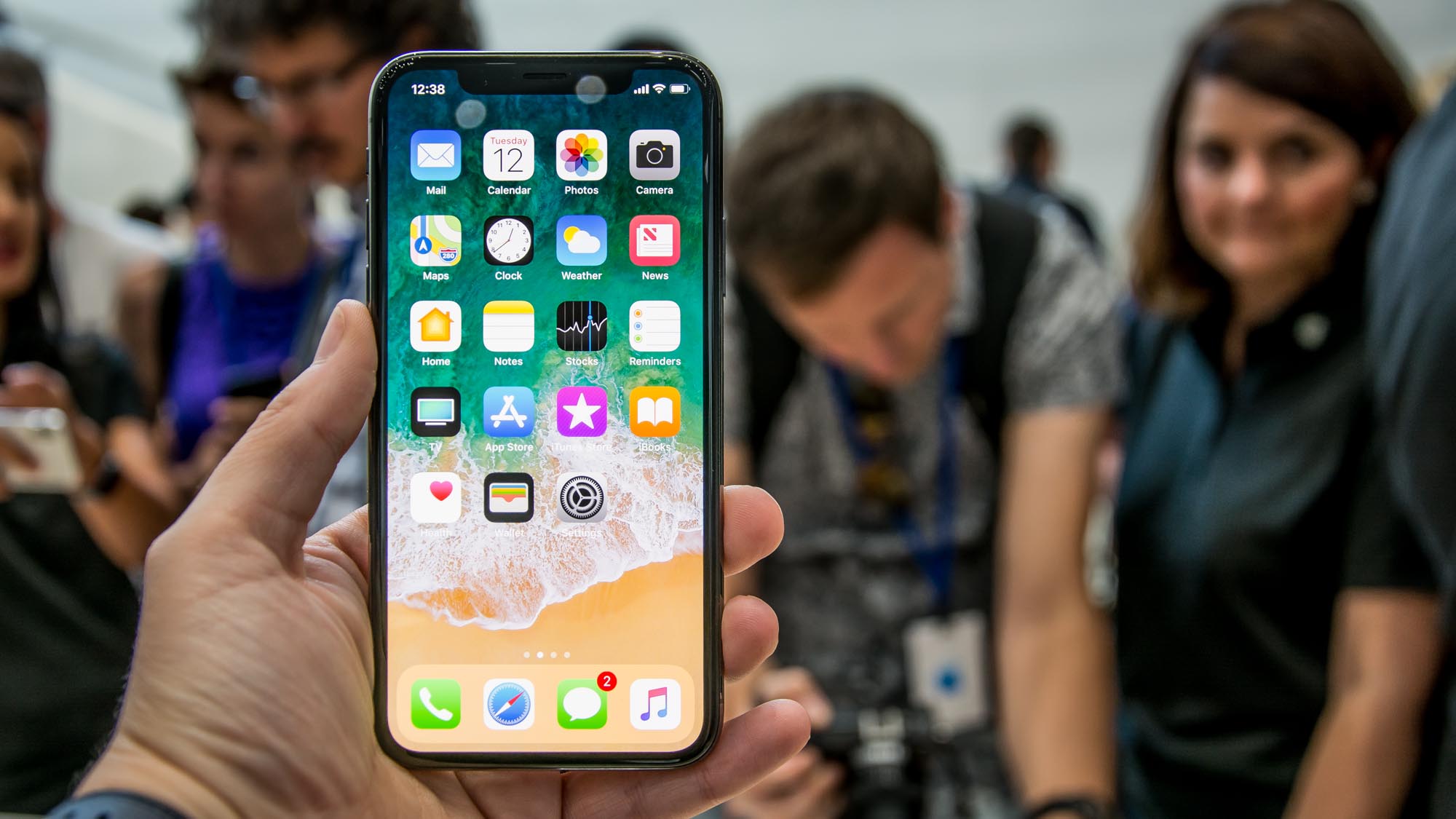
The iPhone X was released on 3 November, over a month after the iPhone 8 and iPhone 8 Plus, which were unveiled alongside it. Pre-orders sold out in record time, but it's now available to buy online and in shops.
Price
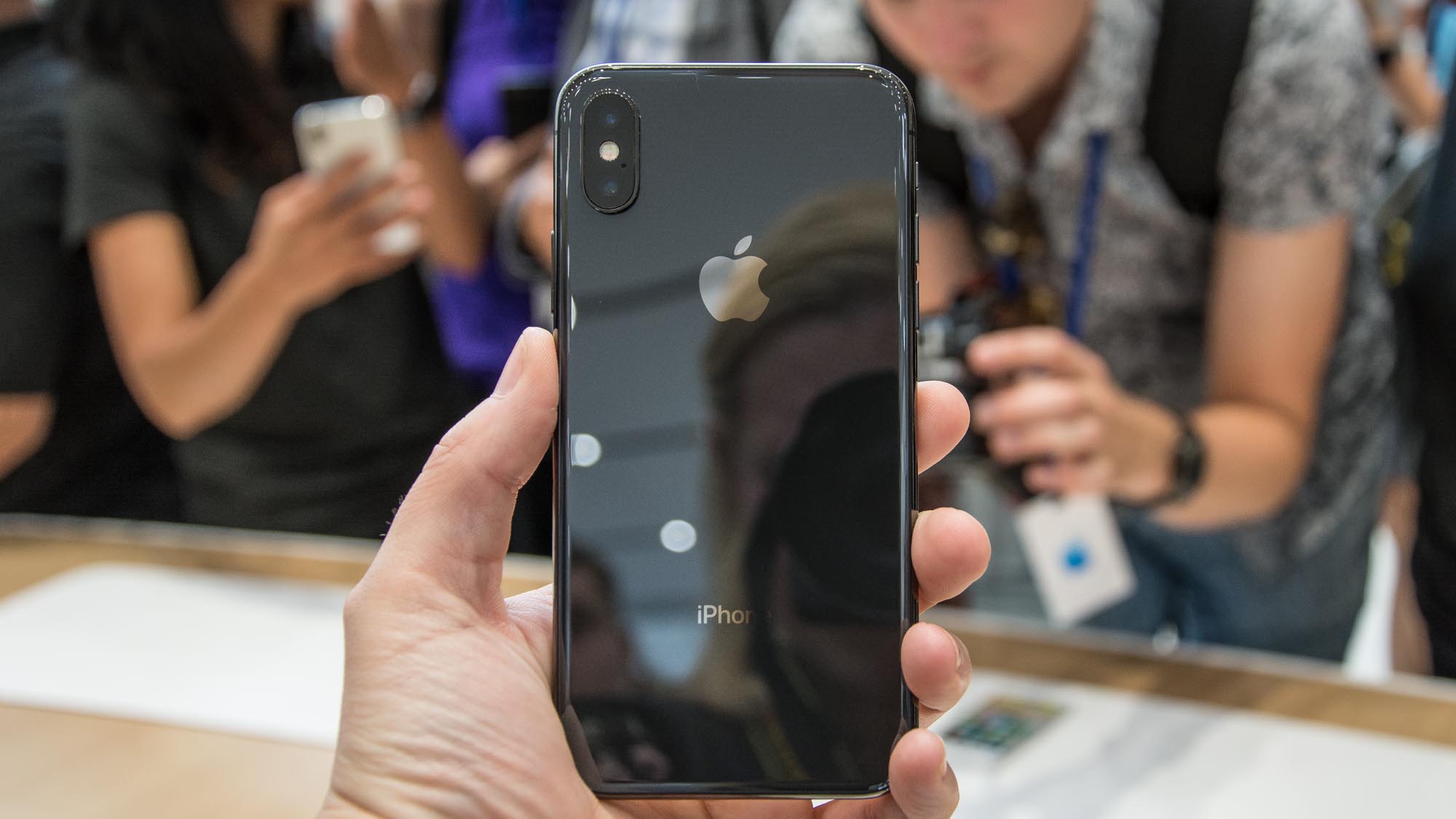
Even for Apple the iPhone X costs a pretty penny. At 999 for the 64GB model, the iPhone X is the most expensive smartphone Apple - or probably most major smartphone vendors - has ever produced.
Specs and hardware
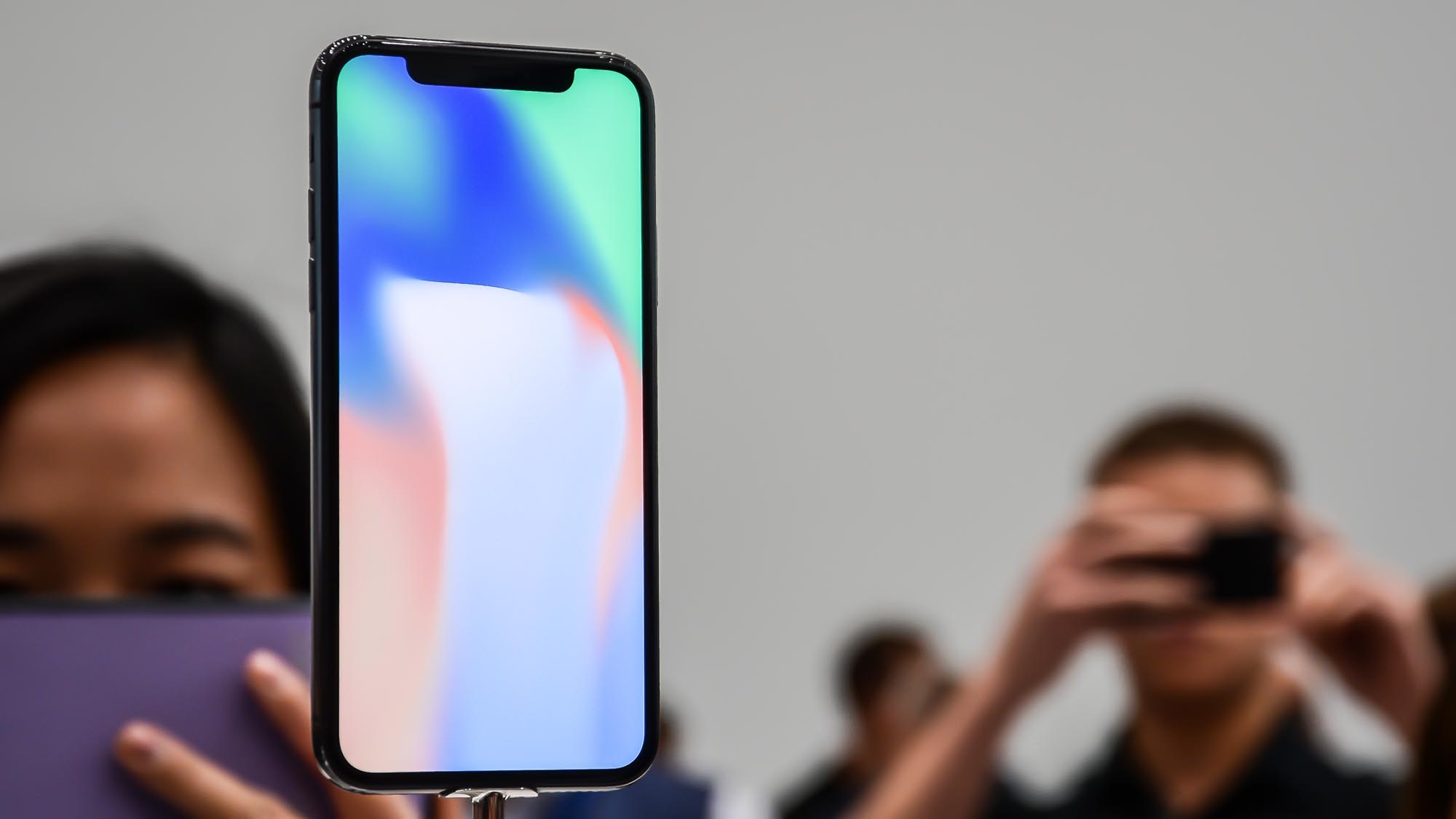
A new six-core A11 Bionic chip with 64-bit architecture (up from last year's four-core A10) powers most of the iPhone X's capabilities. It has 30 percent faster graphics than the A10, and runs 70 percent faster, according to Apple.
When it comes to storage, the iPhone X comes in only two sizes - 64GB and 256GB.
Display
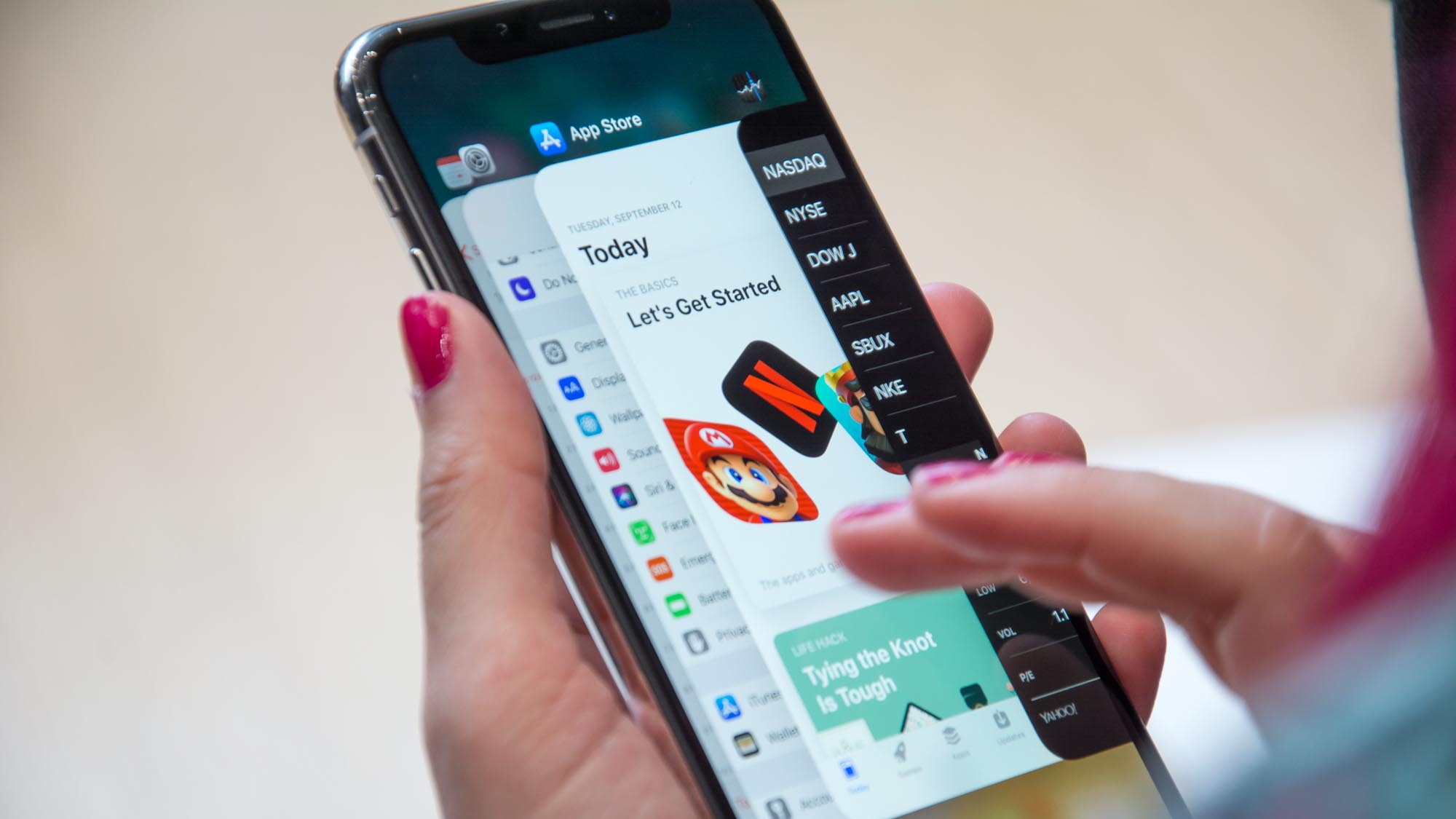
The iPhone X's 5.8in screen is Apple's first to cover the entire front of the phone, which has a glass front OLED multi-touch display on the front, and a glass back as well - pretty sleek, but also pretty breakable, though it is toughened glass.
Its Super Retina HD display helps the Face ID feature (more on which below), while it boasts a 2436x1125-pixel resolution at 458 ppi. The screen includes 3D Touch, which allows you to execute different commands by pressing the screen with varying degrees of pressure.
Crucially, this edge-to-edge display leaves no room for the home button, meaning Touch ID is no more.
Battery
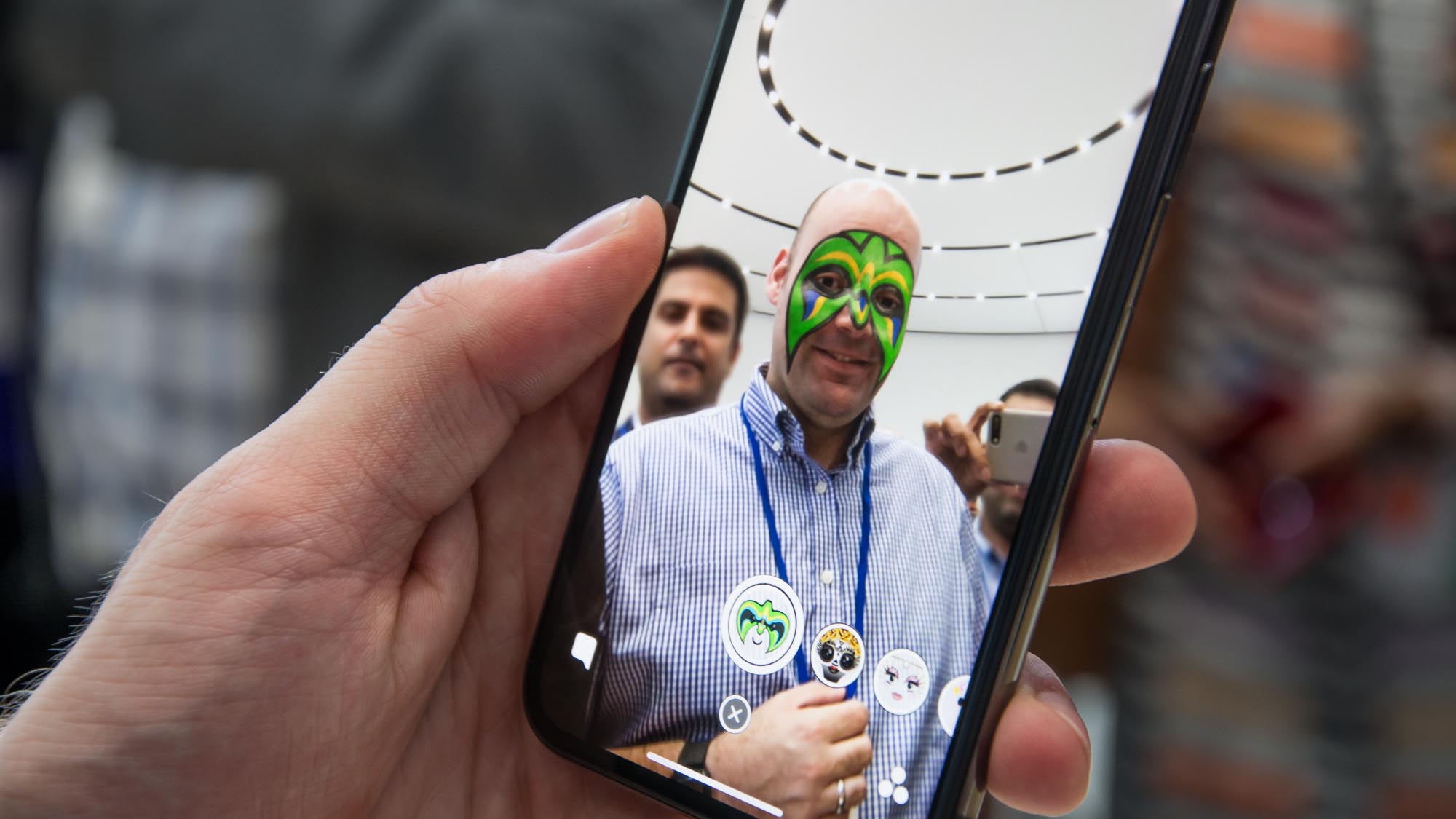
Apple reckons the iPhone X lasts up to two hours longer than the iPhone 7, which itself lasted an impressive 13 hours in our review.
Camera
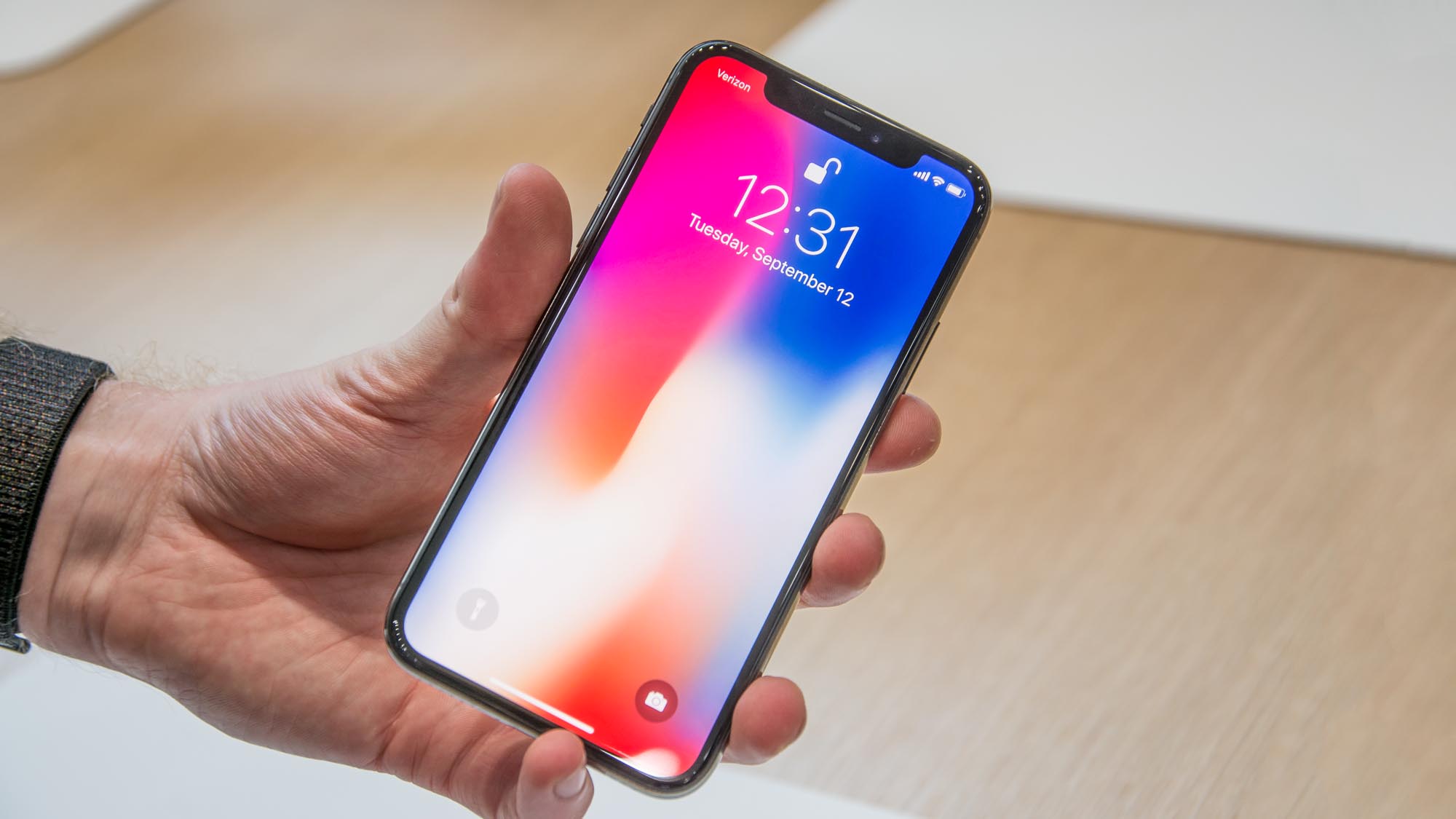
The iPhone X's 12MP camera is the same - on the surface - as the iPhone 7's, but boasts a lot more in terms of its software capabilities. Both larger and faster, this camera can measure depth with the TrueDepth sensor - key to the X's Face ID feature. There's also two of them, one front-facing and one rear-facing, both of course using optical image stabilisation.
Digital zoom on the lenses offers 10x zoom on photos and 6x for videos. The front-facing camera also offers a Portait Lighting feature using the 3D TrueDepth sensor.
It's faster than ever before, too, recording 4K video at 60fps and slo-mo videos in 1080p at 240fps.
Features
Face ID
The A11 chip's integrated neural engine powers the iPhone X's Face ID feature, which replaces Apple's Touch ID fingerprint sensor of yore.
This facial recognition capability has been trained on one billion photos (and on rubber masks to distinguish between real and fake faces) to be able to recognise a user quickly and easily. Apple claims this means Face ID is so secure the chances of it being fooled are one in one million, compared to Touch ID's one in 50,000.
Animoji/AR
In a lighthearted move, Apple has made use of the camera's augmented reality technology to map your facial movements to various animals emoji,
The iPhone X will also support 'animoji' - animated emojis that uses AR technology to map your face and transpose your movements to certain Emoji, creating stickers and animated voice messages Naturally, the company has also partnered with Snapchat to optimise masks and filters for the iPhone X's new AR capabilities.
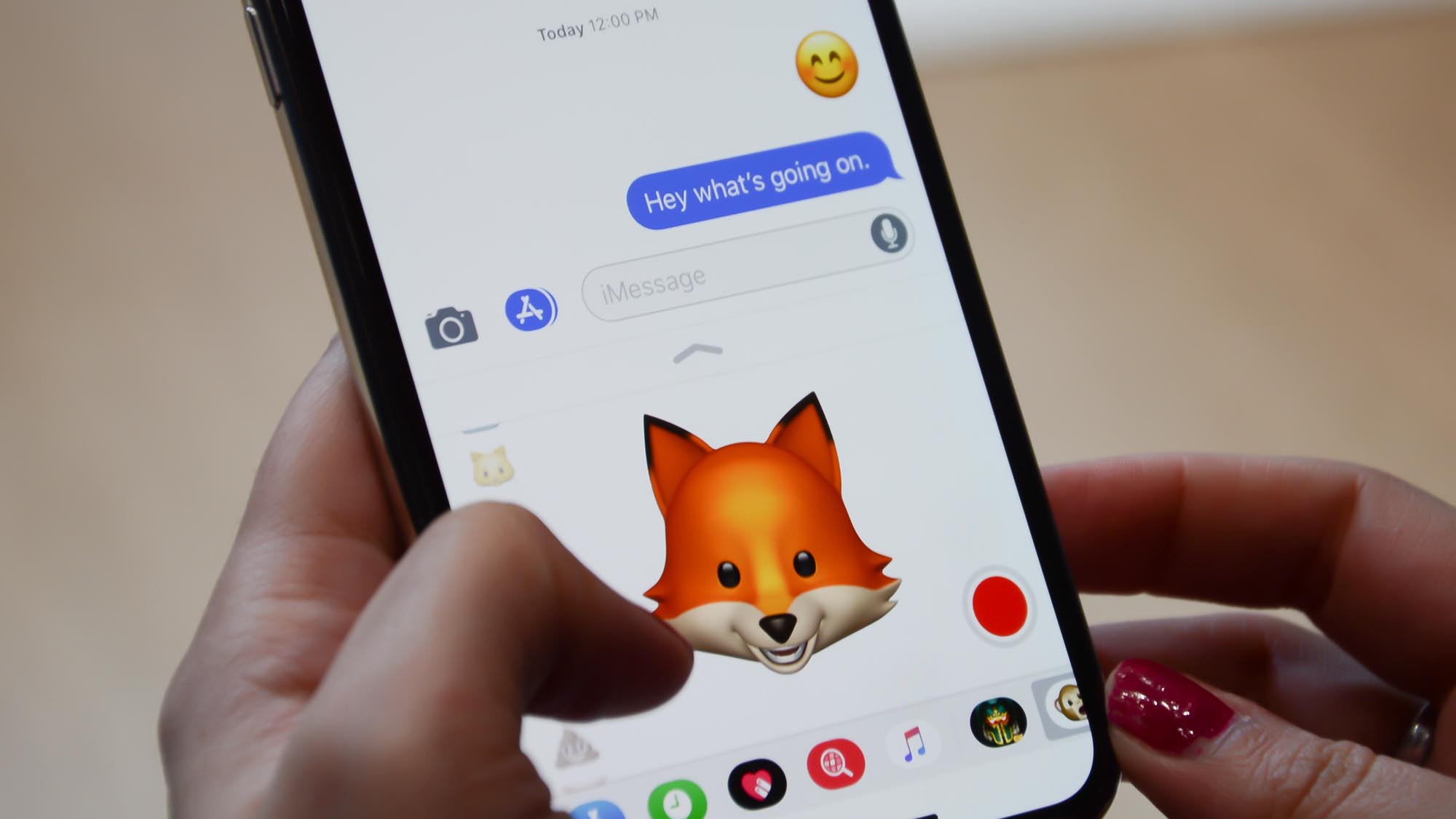
Wireless charging
This feature isn't exclusive to the iPhone X, but Apple's AirPower pad allows you to charge your iPhone 8, X or Apple Watch 3 without the tangly mess of attaching a cable.
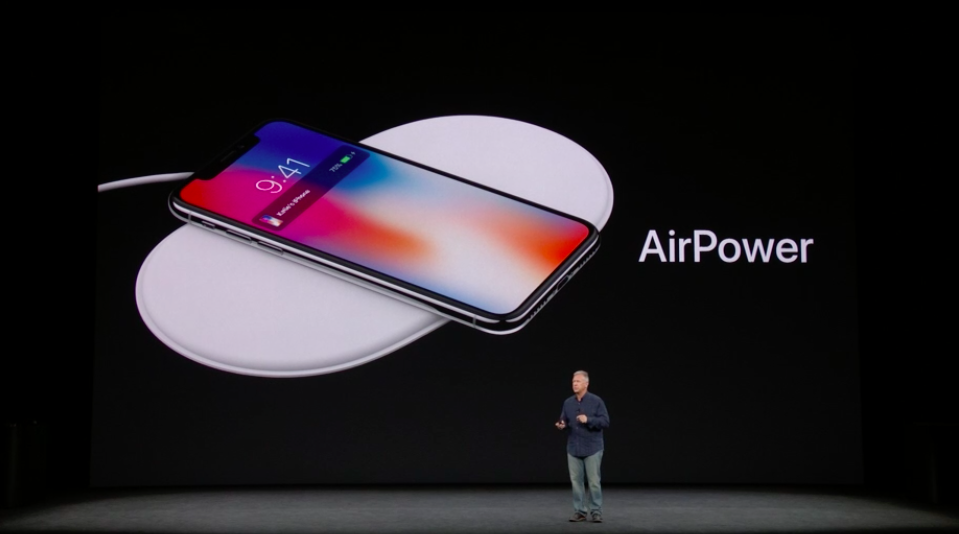
Colours
The iPhone X is available in Silver and Space Gray on launch.
Bobby Hellard is ITPro's Reviews Editor and has worked on CloudPro and ChannelPro since 2018. In his time at ITPro, Bobby has covered stories for all the major technology companies, such as Apple, Microsoft, Amazon and Facebook, and regularly attends industry-leading events such as AWS Re:Invent and Google Cloud Next.
Bobby mainly covers hardware reviews, but you will also recognize him as the face of many of our video reviews of laptops and smartphones.
-
 Cleo attack victim list grows as Hertz confirms customer data stolen
Cleo attack victim list grows as Hertz confirms customer data stolenNews Hertz has confirmed it suffered a data breach as a result of the Cleo zero-day vulnerability in late 2024, with the car rental giant warning that customer data was stolen.
By Ross Kelly
-
 Lateral moves in tech: Why leaders should support employee mobility
Lateral moves in tech: Why leaders should support employee mobilityIn-depth Encouraging staff to switch roles can have long-term benefits for skills in the tech sector
By Keri Allan